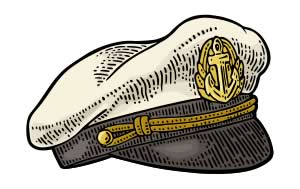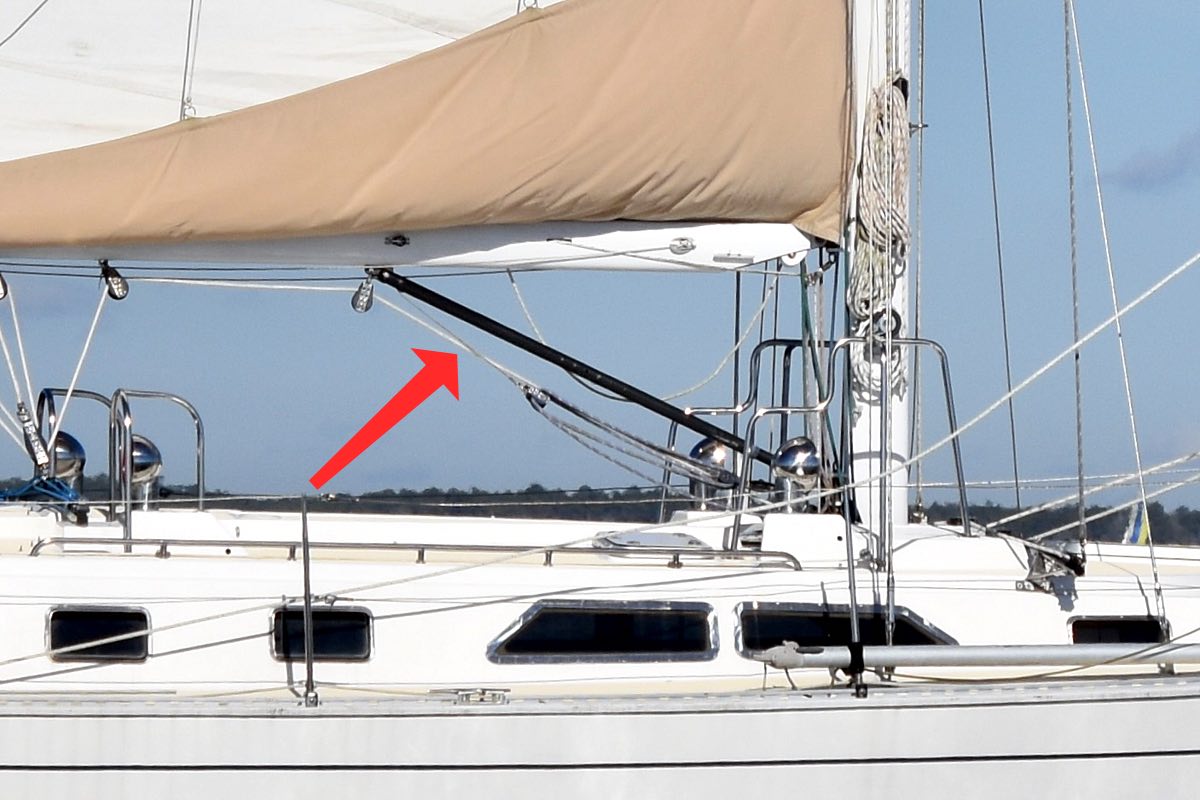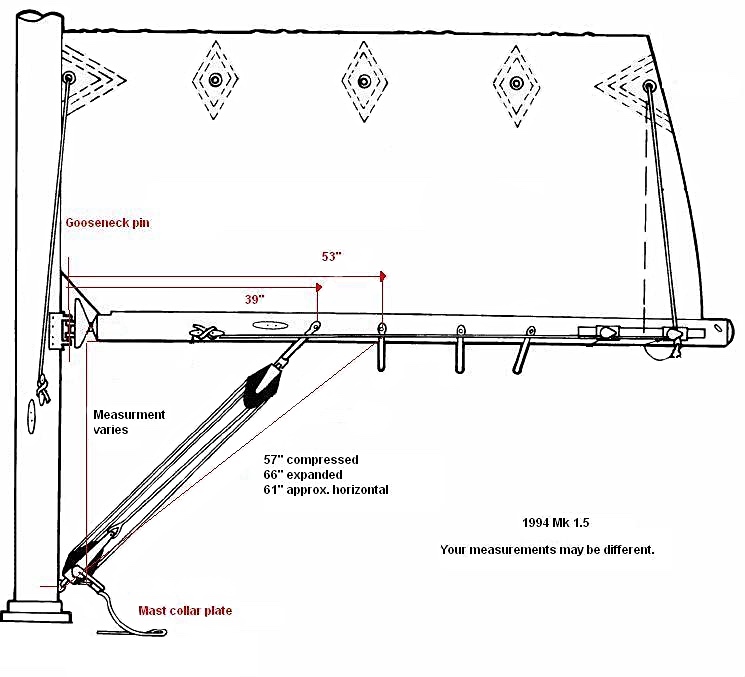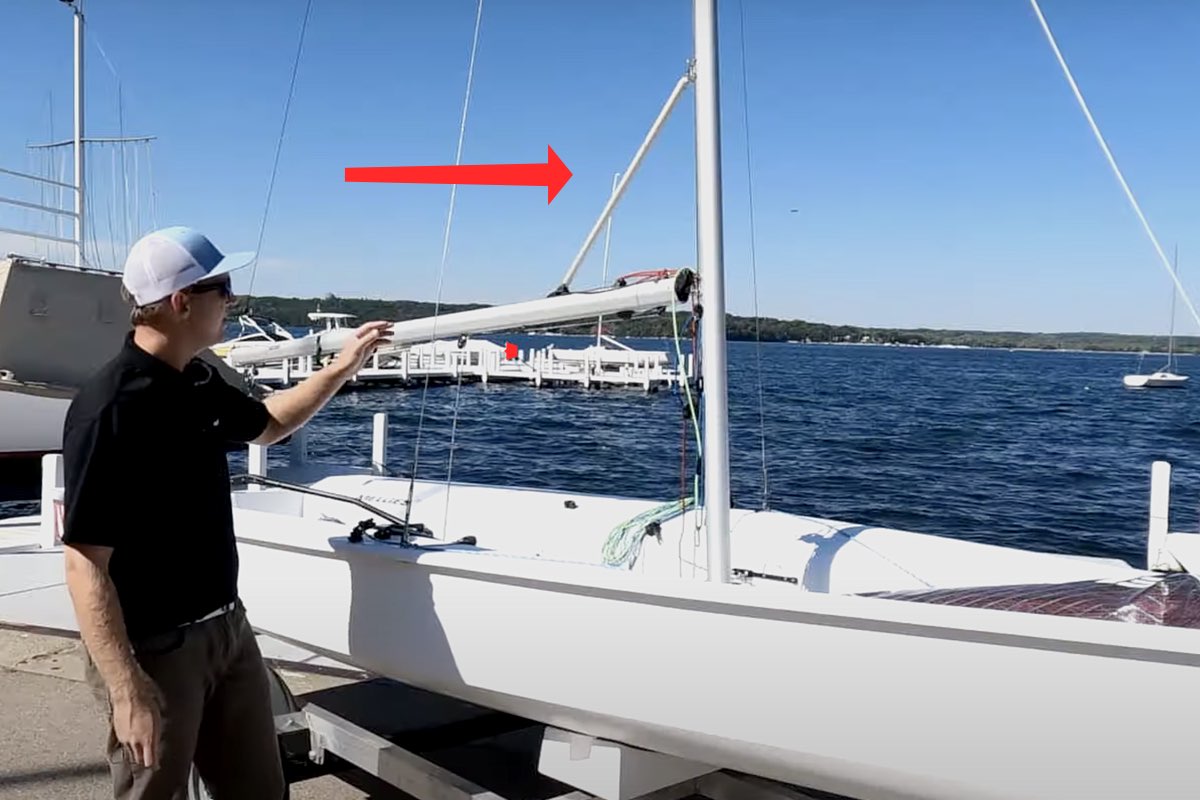It's Friday December 12, 2025

January 2023
It is not boomer vang. And, it has nothing to do with a boomerang. It’s not even an Australian invention.The device is properly called a boom vang. The vang, for short, is that mysterious device that hangs mid-way under the boom and connects to the boat. Similar to the traveler (see last month’s rant), the vang is underutilized. When a local sailboat owner, with a lot of experience, told me the function of the vang was to hold up the boom, I knew my next blog had to be about the vang.
Bunky, (TownDock editor term) you don’t use your vang enough. Read on for a heavy dose of the vang.
Some boom vangs are lines. Some are solid. Some are a combination.What it do?The mysterious boom vang can be a misunderstood sail control. The vang pulls down on the boom once the mainsheet is eased. As you know, the boom height determines twist, or the shape of the mainsail leech. The vang bends the lower mast, sags the jib stay and allows the boom end to be more flexible. (Simple?)
Why not?If you don’t use the vang, the boom will rise up as the mainsheet is eased and the sail will twist off spilling power out of the top of the sail. If the boat has too much heel and helm, twisting off the top may be helpful.But not when you need the power.
Also, not taking advantage of your boom vang limits how far out you can ease the sail. If the top is twisted off, it may run up against the upper shrouds and wrap itself around the stay. The vang enables you to ease the mainsail as far out as desired.
The golden rule of vang: keep the top batten parallel to the boom. If the vang is too tight, the top telltale will stall. (I hope you have telltales/leech ribbons.)
There are exceptionsMultihull boats have a traveler that runs the entire width of the boat. With a multihull, easing the traveler to leeward allows the mainsheet to continue to pull down and control twist. The length of the traveler lets the boom go a long way out before it begins lifting.Also, multihulls have upper shrouds that are quite far aft. The shrouds prevent easing the mainsheet very far. (Make sense?)
Diagram for a Catalina showing optional boom vang positions. (Owner’s manual diagram).OthersThe other exception involves high-performance planing boats using asymmetrical spinnakers. (Melges 24s, 32s, C&C 30s, J70s etc). With these boats, a huge amount of twist is required in order to plane. The leech of the mainsail must match the leach of the asymmetrical spinnaker when sailing high reaching angles. To accomplish the required twist, the vang must be eased until it is almost off.
Seen one of these?A ‘gnav’ (the word vang spelled backwards) is an inverted vang. The gnav is a rigid strut that extends obliquely upward from the boom to the mast. It exerts a force that pushes down on the boom. As the gnav on the boom is hauled inward toward the mast, the downward force on the boom increases.
Compared to a vang, a gnav offers more uncluttered space beneath the boom. These are rare. Most of us won’t use one. ‘Cause you wanna know what one looks like, see below.
A gnav, situated above the boom, on a Melges 15.The how toVery light, light, moderate, heavy and very heavy
(Short versions.)• In very light air, use no tension. The mainsail leech must be kept (very) open.
• In light air, use moderate tension. Headsail trimmers will want the jib stay to sag a little to increase the jib fullness and shift the draft forward.
• In a moderate breeze, again use no tension. The main will be full and the jib stay tight.
• In heavy air, moderate tension flattens the mainsail as desired.
• Finally, in very heavy breeze, much tension is required to further flatten the mainsail with the sail twisted.Conventional mainsail sheeting(Not vang sheeting)
In conventional mainsail trimming, the mainsheet controls the angle of incidence and twist. Meaning the mainsheet pulls the boom in and down. Nearing full trim, the emphasis is on the down component (adjusting twist). At this point, the traveler will take over the in and out component. This technique does not rely on the boom vang as an upwind sail control.
What the heck is vang sheeting?We all use vang sheeting when going downwind. But vang sheeting usually refers to an alternate method of upwind mainsail trimming.
Vang sheetingIn vang sheeting, the vang takes over the mainsheet’s up/down control over the boom and the mainsheet handles the in/out trim; which is the traveler’s job in most conventional upwind arrangements.
A boom vang in action.Vang sheeting does not require a traveler. It does requires a powerful vang capable of handling the entire leech load.
Vang sheeting is most common on sailing dinghies and boats without back stays. No back stay means the vang will pull the boom down and push it forward. The forward force of the boom will bend the mast. Clear as mud?
The finishI trust you have found this helpful and are convinced that using the vang is worth the effort.Disclaimer; I have boiled this down with focus on one sail control. However, sail trimming is much like an orchestra; to make good music, all the sections must be in concert together. In sailing, the mast rake, mast bend, vang, outhaul, Cunningham, traveler, mainsheet, jibstay sag, jib sheet tension, and jib lead position must all play together.
Science and physics are used to explain sail trimming. However, art is involved in the application. And art is about enjoyment, not physics.
So above all, have fun and do not obsess. “It’s a recreational activity.”
Fair Winds,
Captain John Rahm
Third Wave SailingRelated Links• Traveling Crusade
 Captain's Blog on TownDock.net is all about making your time on the water enjoyable. Captain John Rahm teaches sailing and boat handling at Third Wave Sailing. Captain's Blog on TownDock.net is all about making your time on the water enjoyable. Captain John Rahm teaches sailing and boat handling at Third Wave Sailing. |



